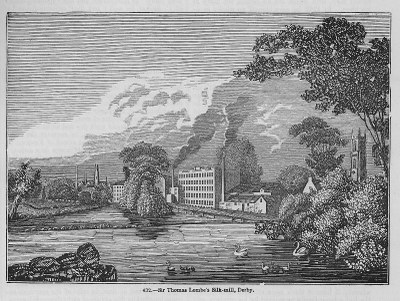Thomas Lombe's silk factory in Derby, before 1750
by
—
last modified
2022-11-21T17:09:26+02:00
The New York Public Library
The New York Public Library
Thomas Lombe's silk factory in Derby, woodcut, before 1750, unknown artist; source: Charles Knight's Pictorial Gallery of Arts, vol.1, 1860, p. 97, Courtesy of The New York Public Library, www.nypl.org, https://digitalcollections.nypl.org/items/510d47d9-c797-a3d9-e040-e00a18064a99.
China Fashion and Sinophilia in the 17th and 18th Centuries@China Fashion@(ÜB)@freigabe
Work Spaces: From the Early-Modern Workshop to the Modern Factory@Workshop and Factory@(BE)@freigabe

